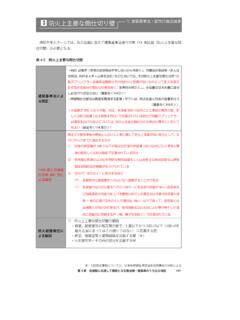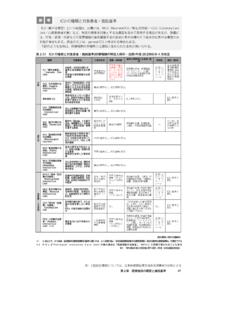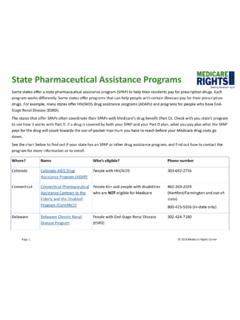Transcription of An introduction and identification guide to Chinese Qing ...
1 An introduction and identification guide to Chinese Qing-dynasty coins by Qin Cao This guide has been developed to provide a quick and easy way of identifying Chinese cash coins of the Qing dynasty (1644-1911), the last imperial dynasty of China. They are the most common Chinese coins seen in the UK. In English, they are often known as cash coins after the pidgin English word cash for small base metal coins. This word was derived via the Portuguese form caixa from the Indian word karsha (meaning a small copper coin) 1. Of course, in Chinese they have a different name, and are known as qian (an old name for coin, originally from a weight term), tongqian (which translates literally as copper coin ) or wen (another old name for coin). Qing-dynasty coins, like Chinese coins for centuries before them, are copper alloy pieces cast from moulds, with a square hole in the middle and an inscription.
2 There are no pictorial images on Chinese cash coins. People normally refer to a coin by the inscription on the obverse (front). For example, a coin with the obverse inscription Kangxi tongbao is known as a Kangxi tongbao coin . Unless otherwise indicated, all Kangxi tongbao coins have a denomination of 1-cash. The obverse inscription on most Qing-dynasty coins consists of four characters arranged around the hole, in the order top-bottom-right-left. The first two characters provide the reign title of the emperor. In the Qing dynasty most emperors had only one reign title (in other dynasties, the emperors had several reign titles each); only one emperor had two reign titles. For this reason, Shizu (the first emperor of the Qing dynasty) are known in English as Shunzhi Emperor , Shunzhi being the reign title.
3 The last two characters are usually tong and bao . Tongbao translates as circulating treasure and means coin . Qing-dynasty coins also have an inscription on the reverse (back). The reverse inscriptions vary slightly over time, and are either in Manchu or Chinese script only, or Manchu and Chinese script together. Coins minted in Xinjiang (a region in the northwest part of China) may also have the Uighur script in the reverse inscriptions. Qing-dynasty coins have a Manchu inscription because the rulers were from the Manchu ethnic group, originally from the northeast of China. The majority of the 1 Joe Cribb, Money in the Bank: The Hongkong Bank Money Collection, London, 1987, p. 4. Chinese population then, as now, were Han.
4 In 1616, Nurhachi proclaimed himself Khan (ruler) of the Manchus and started issuing coins with both Manchu and Chinese inscriptions. The Qing dynasty had its capital in Beijing, which had been the capital of the preceding Ming dynasty. When it came to issuing coins, mints in the capital city, managed by the Board of Revenue and Boards of Works, were opened up first. A total of eleven emperors ruled the country over the 250 years of the Qing dynasty, and all of them issued coins. Only Tongzhi emperor issued coins under two reign titles: Qixiang and Tongzhi . He first inherited the throne with the reign title of Qixiang in 1861, but later that year a coup took place, and the Empress Cixi (later known as the Dowager Empress) seized power. The Qixiang reign title was abolished, and the Tongzhi reign title was adopted in the following year.
5 Only a small quantity of Qixiang tongbao coins is known, and they probably never went into general circulation. This brief guide includes the following sections: I. How to read inscriptions on Qing-dynasty coins II. A catalogue of Qing-dynasty coins III. Qing-dynasty mint marks and map of China IV. What could a Qing-dynasty cash coin buy? V. Further reading 1 I. How to read inscriptions on Qing-dynasty coins For someone who reads Chinese , obverse inscriptions on Qing-dynasty coins are very straightforward. This article aims to provide tips for people who don t know much about the Chinese language. Chinese is written in characters, and each character has one syllable. When transliterating Chinese , the standard is to use the Chinese pinyin system of romanisation.
6 1. Determine the obverse and reverse. Qing-dynasty coins normally have inscriptions on both sides. The side which has four Chinese characters will be the obverse. Below are images of both sides of a coin. One side has four characters, so this must be the obverse. The other side has a different style of inscription and is the reverse. 2. Hold the coin the right way up. Qing-dynasty coins have inscriptions, so you will need to determine which way up the inscription goes. The key is to find the character bao (meaning treasure ), which is always on the left side of the hole. It is quite easy to identify: look for the roof-like component with its little chimney. 2 Look at the four images below and see if you can tell which coin is the right way up. The answer is at the end of this document.
7 3. Read the inscription in the correct order. The four characters are arranged around the hole. The reading sequence for Qing coins is top-bottom, then right-left. Taking this Yongzheng tongbao coin as an example, the first two characters are Yong and zheng , which give the reign title Yongzheng of the Yongzheng emperor (1723-1735). The third and fourth characters are tong and bao . Tong means circulating and bao means treasure , and together they state that this is a coin and that it should circulate freely. 4. The reverse inscription. The reverse inscription normally gives the mint of the coin. The Board of Revenue and the Board of Works were the two principal mints in Beijing, the capital city of the Qing dynasty, and their coins were normally of good quality.
8 Yong Zheng Tong Bao 1st 3rd 2nd 4th 3 There were about 50 local mints spread across the country. Most of them were only in operation for a short period of time. There are 7 main types of reverse inscriptions on Qing coins (see below a-g): a) Manchu script only. This is the most common type of reverse among Qing coins (see 3. Qing-dynasty mint marks and map of China). The character on the left is always the same: it reads boo in Manchu script. It is the equivalent of Chinese bao written in Manchu script. It refers to the same Chinese character bao in the obverse inscription. The inscription on the right varies according to the mint. Again, the inscription is a phonetic rendering in the Manchu script of a Chinese place name. b) Chinese script only.
9 On these coins, the character to the right of the hole indicates the mint. The characters to the left of the hole give the value of the coin. In the image below, yili translates as 1 li ( li being a weight term) of silver. Yili Hu (Board of Revenue mint, Beijing) 4 c) Chinese and Manchu script together. These coins have a Chinese character to the right of the hole, and a Manchu inscription to the left of the hole. Both refer to the mint, and the Manchu inscription is a phonetic rendering of the Chinese . This only occurs on the Shunzhi tongbao coins. d) A single Chinese character on the reverse. On these coins, the single character is placed above the hole, or to the left or right of the hole. It indicates the mint. e) No mint name on reverse.
10 On these coins there is a sometimes a circle above the hole or a single Chinese character (yi, meaning 1). f) Manchu script and Chinese script. These coins have an inscription in the Manchu script arranged to right and left of the hole, identifying the mint. They also have a Chinese inscription (reading top-bottom) which gives the value of the coin, in this case a 10-cash coin. The coin illustrated here is a 10-cash coin. This type is mostly common among the large-denomination coins of the Xianfeng emperor. Zhe (Hangzhou mint, Zhejiang province) Je (Hangzhou mint, Zhejiang province) 5 g) Manchu, Chinese and Uighur script. The coins from Xinjiang are immediately recognisable because they are much redder in colour than the other Qing-dynasty coins, reflecting the local copper ore from which they were made.






